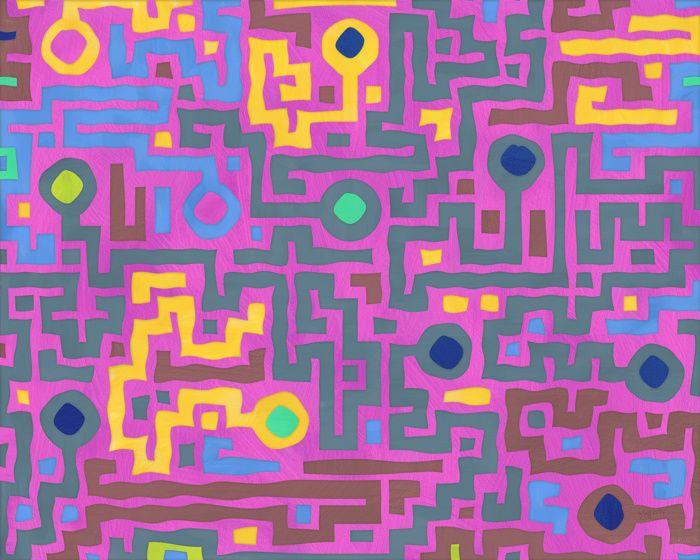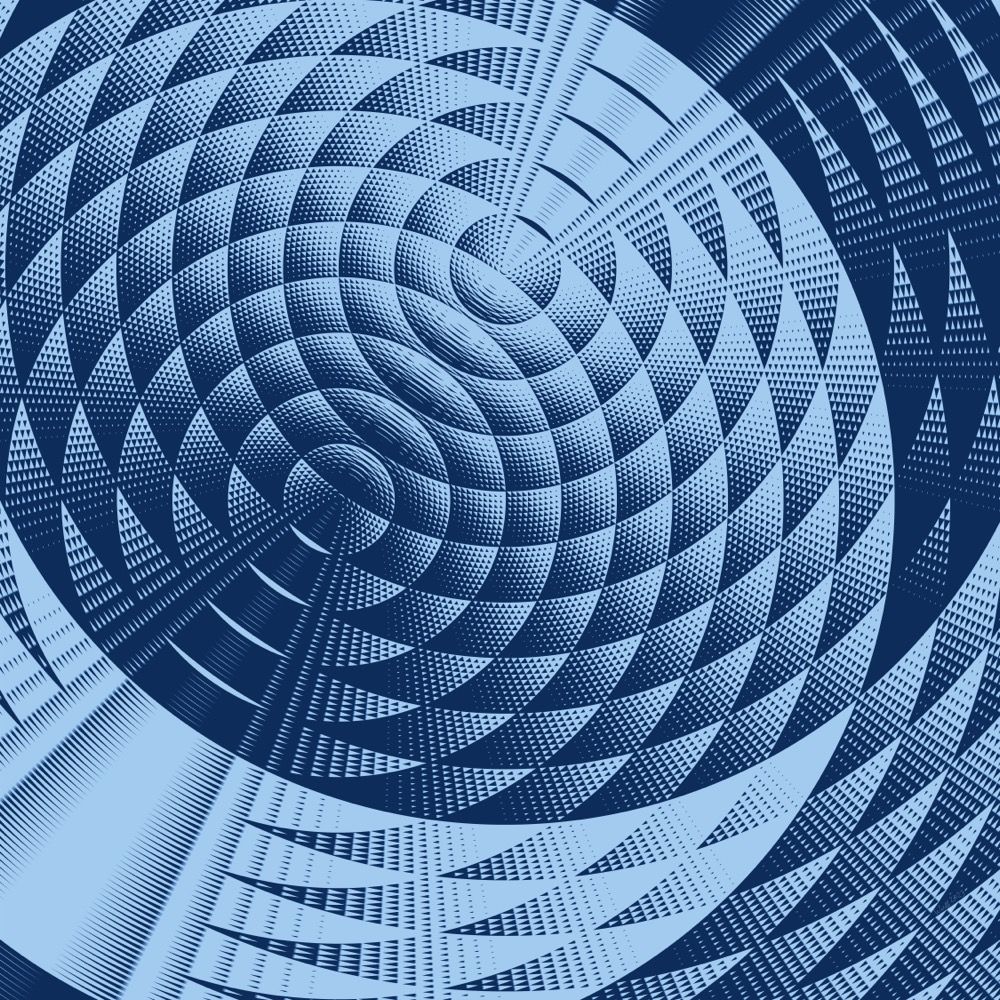What Is Generative Art?

I am a generative artist. But what does that mean?
Generative art is generally created by a process, typically computer code but can also be mechanical or manual, wherein an image is produced automatically. Most often, it includes an element of randomness.
Using a computer to generate art goes back to the early days of computing in the 1960s; however, using randomness in art is not tied to using a computer. Jackson Pollack, for example, created works using randomness by dripping and applying paint to a canvas lying on the floor in a free-flowing but still somewhat controlled manner. Generating imagery using a computer is similar in that randomness and chaos are harnessed and directed to a specific goal despite the result appearing as if it were unpredicted.
Most generative art is non-objective and abstract. However, people try to create landscapes, portraits, and other objective-type art; it is not all that common since creating the illusion of the natural world is still very difficult.
While A.I. art is widely hyped today and generates a kind of art, it is unrelated to generative art. The current type of A.I. art (diffusion) is trained on billions of small images and is limited to reproducing unique amalgamations of what it learned. A.I. cannot create the type of abstract art made by generative means since it operates on textual descriptions of the learned images, and non-objective, abstract art is challenging to describe with words.
Generative art is mainly made by writing computer code. It is often written in Javascript (a programming language associated with websites and web applications but can be used outside of that) and primarily using a framework called p5.js. p5.js is based on a tool called Processing, which has a non-programming interface and has existed for over two decades. I write all my generative tools in Swift, Apple's primary language for writing iOS and MacOS applications. I spent a decade writing iOS applications before retiring. Swift has advantages over Javascript for performance, and Apple provides a rich set of additional technologies I can leverage. p5.js does have an edge in that it can run in a browser and is the primary tool for making NFTs.
Generative art can be divided into different subtypes.
First, you can generate the image solely from code. An example of this type is the Tyler Hobbs Fidenza series, an immensely popular NFT.
Second, you can combine code with pre-built assets. An example of this type is the well-known Bored Apes, built from a large set of pre-drawn parts that fit into a structure and are chosen by code and combined to produce unique Apes. After they were released and made enormous amounts of crypto, many clones appeared featuring every kind of face imaginable, including pasta, for some reason.
Both sub-types can be further defined by creating a single image or writing the code to include many options chosen in a random combination when the image is generated (mostly common for NFTs). The latter allows for producing/selling many images, each with unique characteristics. There were 10,000 Bored Apes created; some characteristics are rare and thus more valuable.
For me, generating images is only part of my process. I have written many tools, mostly with extensive options, that allow me to create many different types of content. My approach is evolutionary, in that an initial idea changes over time until I am either satisfied with the result or delete everything and start over. Generated imagery combines digital effects and painting and is cycled through much experimentation. Rarely will I create something in a single step. This type of generative art appears to be uncommon.
Given that generative art built from computer code is digital, it will exist solely in the digital world (such as an NFT), be printed (often in a process called Giclee), or sometimes be used to drive a device like a pen plotter.
While the art is often 2D, it is possible to make 3D and even 4D art (with the addition of time, i.e., a video).
My art is designed to be printed at 300 dots per inch. Digital printers are commercially available to print images up to 64 inches in the smallest dimension. Images at this resolution can be huge; a 30x30-inch image has 81 megapixels, and a 60x60-inch image would have 324 megapixels. Cell phone images, in comparison, range from 2 to 50 megapixels, although the latter has limitations and is rarely seen online. A.I. art usually creates images of around 1 megapixel. Most of my generated works range from 50 to 200+ megapixels (20x20 t0 48x48 inches).
Creating generative art requires a lot of patience and trial and error. While the possibilities are endless, much of what you make during the process is not interesting or boring. Having an excellent eye to balance, color, uniqueness, and creativity is similar to painting in a more traditional method, but with the bonus of trying many variations. This can be helpful but also create a feeling of never being finished. Painting on a canvas requires a lot more pre-planning and careful effort to avoid wasting a large canvas and time if the result is not satisfactory; with generative art, you may spend a lot of time writing code for a particular effect, but once you have it rapid alternatives can be attempted quickly.
One drawback to generative art is seeing people dismiss it as "not art" or claim it is simply a machine generating cheap content. Like all art forms, it still requires creativity, imagination, and effort to produce something unique. I am sure many people thought Jackson Pollack's art needed no talent or effort, and the Impressionists and Fauvists were even laughed at. How long it takes to make a piece of good art is not a quality measure; one doesn't have to spend years on a single piece (for example, A Sunday on La Grande Jatte took Suerat three years to make). Some of my pieces are accomplished in a few minutes or hours but do not include all the time I need to build the code and techniques necessary for that short time. Picasso could make a fantastic piece of art with a single line after a lifetime of experience.
Here are a few samples of my recent work (see more on my website).




